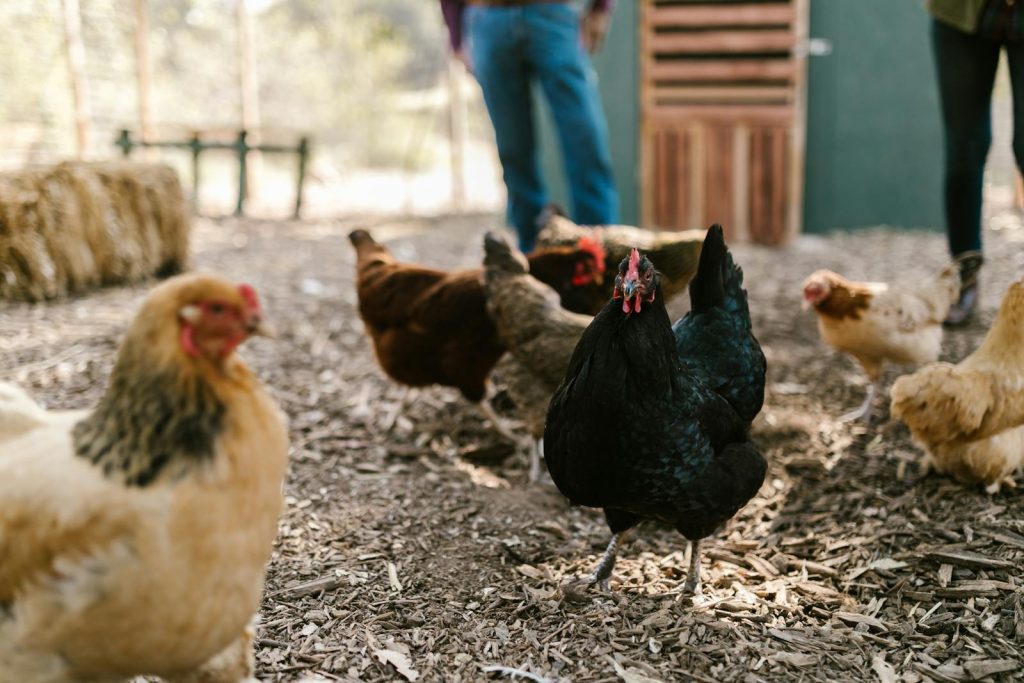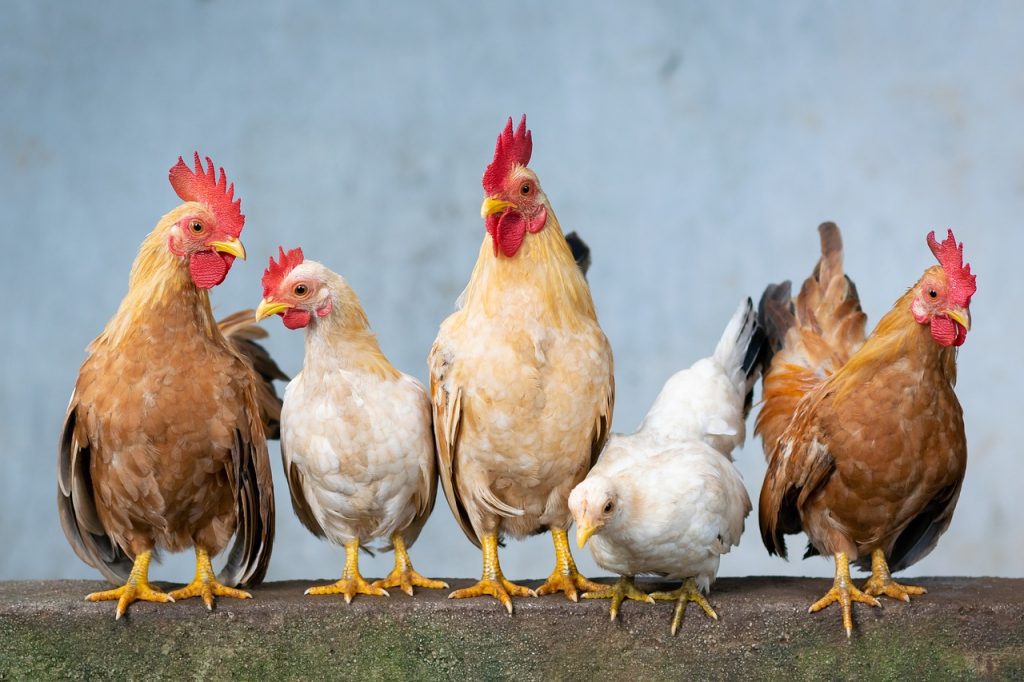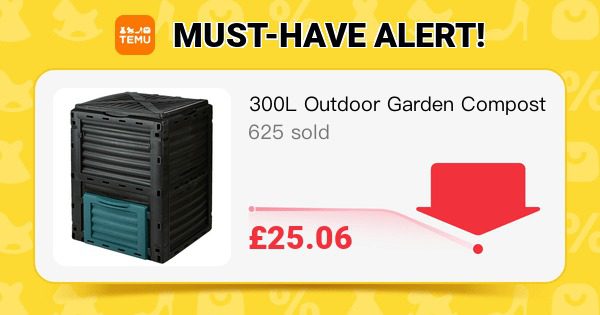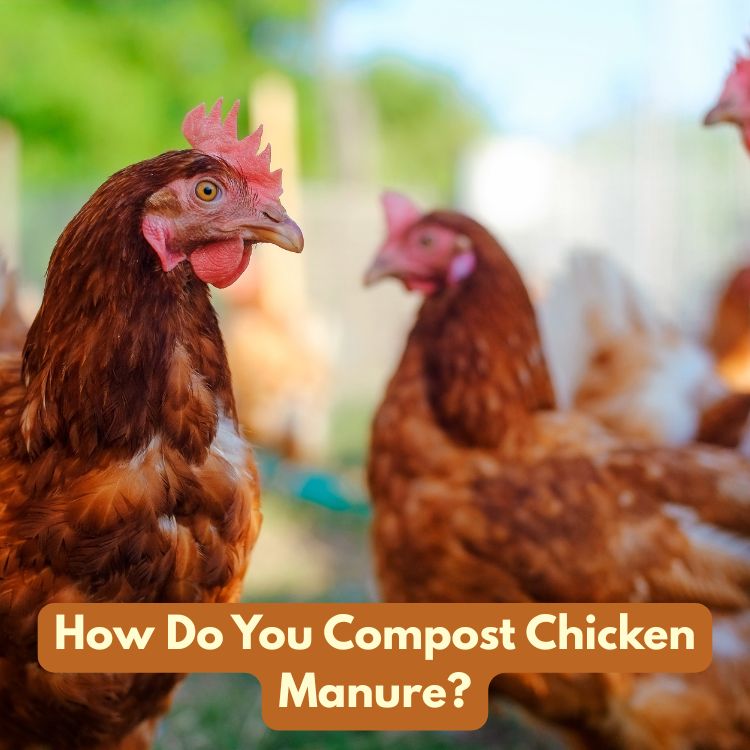Simple Steps for Garden Success
If you’ve ever wondered how chicken manure turns into garden gold, you’re in the right spot.
Composting is a simple way to recycle food scraps, garden waste, and yes, even chicken manure into rich, crumbly soil for your plants.
By breaking down these natural materials, composting helps reduce waste and gives your garden a health kick—all while keeping things eco-friendly.
Chicken manure is valuable for compost because it’s full of nutrients, but it needs special care.
Composting chicken manure safely means mixing it with other materials and letting it “cook” until it’s safe to use.
That’s the secret to getting the most from your flock without risking your plants.
This friendly guide will show you exactly how to compost chicken manure, whether you use a backyard bin, a compost tumbler, or even try vermicomposting with worms.
You’ll soon see how easy it is to turn chicken droppings into something truly helpful for your garden and the environment.
For those just starting out, check out our tips on making mushroom compost at home or try your hand at brewing compost tea for even more ways to boost your soil.
Understanding Composting and Chicken Manure
When you hear the phrase “turning waste into treasure,” composting is a perfect example, especially if you’re raising chickens in your backyard.
If you’ve wondered, “How do you compost chicken manure?”—the answer starts with understanding the basics of composting and why this process is important for both your garden and the planet.
Composting is nature’s recycling system, breaking down kitchen scraps, garden clippings, and even chicken droppings into a rich, earthy material that plants adore.
It’s simpler than it might sound, and with a little know-how, anyone can join in.
 Photo by Sippakorn Yamkasikorn
Photo by Sippakorn Yamkasikorn
What Is Composting and Why Does It Matter?
Composting is a natural process that turns leftover food, yard clippings, and farm waste like chicken manure into valuable “black gold” for your soil.
When you compost, you help reduce landfill waste, support a healthy environment, and provide your garden with nutrients it can’t get from a bag at the shop.
The magic happens with the help of tiny organisms—bacteria, fungi, and worms—who break down the materials and make them safe for plants.
Not only does composting save money on chemical fertilizers, but it also protects groundwater and cuts down on harmful greenhouse gases.
For a closer look at why composting is so important, Composting 101 offers an easy-to-follow explanation with helpful tips.
Key takeaways on why composting matters:
- Cuts down on trash: Less waste means fewer trips to the landfill.
- Feeds your soil: Compost provides the nutrients plants crave.
- Protects nature: It reduces pollution and limits chemical runoff.
- Helps the climate: Composting keeps organic waste out of landfills, cutting greenhouse gas emissions.
If you want to make compost part of your regular routine, check out these helpful Composting Calendar Tips for seasonal guidance.
Why Chicken Manure Is Different
Chicken manure isn’t just another kitchen scrap or leaf pile. It packs a punch when it comes to nutrients, giving plants a head start—but there’s a catch.
Fresh chicken manure is “hot,” meaning it’s high in nitrogen and can burn plants if added directly to garden beds.
Don’t worry, though; composting tames this power, making it safe and gentle for your plants.
Here’s what makes chicken manure unique:
- High nitrogen: It’s loaded with nutrients but needs to be balanced by mixing with “brown” materials like straw, leaves, or cardboard.
- Must be aged: Raw manure can contain harmful bacteria and too much ammonia for plants. Composting transforms it into a safe, crumbly fertilizer.
- Works with compost bins, tumblers, or vermicomposting: Any of these systems can handle chicken manure with the right approach. If you want to try a tumbler, have a look at our guide on Using a Compost Tumbler for step-by-step instructions.
Scientists and gardeners agree that composting chicken manure is the safest route for getting the benefits without the risks.
When you ask, “How do you compost chicken manure?” it really starts with the right mix and enough time.

Composting Methods for Chicken Manure
There are a few handy ways to compost chicken manure, and you don’t need fancy equipment—just a plan and a bit of patience.
Here are popular methods:
- Compost bins: Traditional bins work well, especially if you mix manure with plenty of bedding and yard waste.
- Compost tumblers: These speed things up, keep animals out, and make turning your pile a breeze. Tumblers hold heat, which helps break down waste faster.
- Vermicomposting: Worms love a good mix of food scraps and manure (in small amounts), producing super-rich worm castings.
Not sure which system suits your home? Explore Starting Composting at Home for simple tips to get going, whether you’re new to compost or ready to experiment.
Each method has its quirks, but the goal is the same: turn chicken waste into a garden-friendly treat that boosts plants and keeps your outdoor space thriving.
For extra insight, the EPA explains how composting supports soil and the environment.
Next up: Let’s dive into the hands-on process of safely collecting and composting chicken manure at home, with plenty of cheerful advice to keep your garden growing.
How to Compost Chicken Manure Safely at Home
Chicken manure is garden gold, but it comes with a few important safety steps.
Knowing how do you compost chicken manure the right way turns what could be a smelly mess into a supercharged plant booster.
Here’s how to choose a method that fits your space, and even how worms can help you out.
Choosing the Right Composting Method: Bin, Pile, or Tumbler?
Chicken manure can be composted in three main ways: piles, bins, and tumblers.
Each option has its perks and works best in different homes.
- Traditional Pile Composting: Stacking manure and bedding in a heap is classic and simple. This works well if you have a roomy backyard and don’t mind turning the pile every so often. Piles can handle a steady flow of chicken waste, but you do need some space and a bit of muscle to keep things mixed.
- Dedicated Compost Bins: Compost bins are tidy and great for families who want to keep things contained. These hold in odors and keep out pets or pesky wildlife. They’re a good fit for suburban gardens or households that want a neater look. Mixing browns (like shredded cardboard) and greens (like manure) is key, and bins make this easier.
- Compost Tumblers: Compost tumblers are perfect for urban dwellers or anyone who wants a quick turnaround. Tumblers seal tightly, keeping smells and critters out. Plus, turning the barrel speeds up the breakdown—especially great for “hot” materials like chicken manure. They’re clean, compact, and safe, making them popular in small yards and patios. To get the most out of one, follow a guide on how to use a compost tumbler.
A few helpful tips for all methods:
- Always blend manure with plenty of straw, dried leaves, or cardboard.
- Keep the pile moist, like a wrung-out sponge—not too wet or dry.
- Turn or tumble your compost every week or two so air circulates, which helps break it down fast.
For a broader look at composting styles, try reading about 6 effective composting methods. Matching your setup to your home makes composting chicken manure easy, safe, and even fun.
Composting Chicken Manure With Worms (Vermicomposting)
Vermicomposting means using worms—usually red wigglers—to eat and break down kitchen scraps and manure.
What makes vermicomposting special is the worms. Instead of just waiting for nature to do the work, these little helpers speed everything up and turn waste into rich worm castings (worm poop), which is amazing for gardens.
To start composting chicken manure with worms, you only need:
- A worm bin or big container with holes for air.
- Bedding like shredded cardboard or straw.
- Red wiggler worms, which you can buy online or at garden shops.
- A little bit of older, aged chicken manure (not fresh), mixed with kitchen scraps.
The key is to add only small amounts of chicken manure at a time. Fresh manure is too strong and can make the bin smelly or harm the worms.
If you’re just starting, age your manure outside for a few weeks first, then mix in light handfuls. Keep the bin cool, moist, and never let it dry out.
Worms like the dark and will burrow away from light.
Benefits of vermicomposting:
- Worm castings are gentle and loaded with microbes plants love.
- Bins can be kept year-round indoors or out.
- Kids love helping with worms—making composting a family affair.
Challenges to keep in mind:
- Add chicken manure slowly, or the worms can get stressed.
- Be patient—worm composting is slower than “hot” compost piles.
- Too much moisture or fresh waste can make bins soggy or stinky.
Starting small and keeping things balanced is smart. Want more seasonal advice for managing your compost pile?
See these practical composting calendar tips.
With a little practice, you’ll find a compost method that fits your space, your garden, and your goals.
Composting chicken manure safely at home doesn’t just feed your plants—it helps your family and the planet thrive.
Mistakes to Avoid and Troubleshooting Chicken Manure Composting
Composting chicken manure is an excellent way to recycle waste and create powerful fertilizer, but it comes with its own set of challenges.
Being aware of common mistakes and knowing how to troubleshoot issues makes the process smoother.
If you’ve ever thought, “How do you compost chicken manure without hiccups?”, you’re in the right place. Learning from others’ slip-ups keeps your compost safe, effective, and frustration-free.
Common Mistakes When Composting Chicken Manure
Even experienced composters can slip up now and then. Here are some top mistakes to watch out for:
- Adding Fresh Manure Directly to the Garden: Chicken manure is “hot.” Using it before composting can burn your plants and spread bacteria.
- Not Balancing Greens and Browns: Too much manure (nitrogen) and not enough bedding or dry leaves (carbon) leads to a soggy, smelly pile. Mixing both creates a perfect blend.
- Letting the Pile Get Too Wet or Dry: Your compost pile should feel like a damp sponge. Piles that are too wet become slimy and stinky; piles that are too dry break down slowly.
- Ignoring Temperature: Hot composting is key for chicken manure. If your pile doesn’t heat up, weed seeds and pathogens may survive.
- Forgetting to Turn the Pile: Air helps microbes do their job. Without regular turning, compost can get compacted, slow down, and attract flies or maggots.
- Overloading the Compost Pile: Dumping chicken manure all at once overwhelms the system. Add it in layers, not in heaps.
Want more tips on what not to do? The Oregon State University Extension breaks down beginner mistakes and how to spot them early.
Troubleshooting Chicken Manure Compost Problems
Even when you’re careful, issues can still pop up. Here’s how to handle the most common hiccups in chicken manure composting:
- Bad Smells: If your compost pile smells sour, it’s too wet or there’s not enough air. Add dry materials like straw or shredded cardboard and mix well. Open up the pile with a pitchfork to boost airflow.
- Pile Not Heating Up: Compost needs to hit 55–65°C (130–150°F) to break down chicken manure safely. If it feels cold, add more “greens” to feed the microbes and turn it often. For more advice on getting that perfect heat, check out tips from Tilth Alliance.
- Flies and Maggots: Exposed food scraps or manure attract pests. Always cover new manure with a thick layer of browns. If maggots appear, add carbon-rich materials and turn the heap.
- Too Much Ammonia Smell: This sharp odor usually means too much fresh manure. Add extra carbon, like leaves or paper, and cut back on the amount of manure you add at once.
- Soggy or Compact Pile: Compost that piles up in clumps or feels heavy needs fluffing and balancing. Use a garden fork to break it up, and add more dry bedding.
If you’re using a compost tumbler, remember not to overload it. Keep an eye on moisture and don’t be shy about giving it a good spin.
Need a refresher? Review how to use a compost tumbler for helpful pointers on even mixing and faster breakdown.
The Fix-It List: Simple Solutions for Chicken Manure Composting
Let’s look at a few fast fixes for stubborn compost issues:
- Add More Carbon: Dry, carbon materials like leaves, straw, or cardboard fix odors and wet clumps.
- Turn Frequently: Boosts oxygen and speeds up composting.
- Monitor Moisture: Sprinkle with water if dry, or mix in browns if soggy.
- Layer Manure and Bedding: Always sandwich green and brown materials for balance.
Checking your pile regularly and making small adjustments is far easier than fixing bigger problems later.
For those needing a visual checklist, the guide to composting with chicken manure gives more troubleshooting advice.
If you want to see how composting mistakes compare with other types of manure, take a look at examples like horse manure, which brings its own quirks to the compost pile.
 Photo by Vladimir Srajber
Photo by Vladimir Srajber
Curious about other composting approaches or if your method could use an update?
Head over to the guide on starting composting at home for ideas you can put into practice right away.
Keeping these common mistakes and troubleshooting tips in mind ensures chicken manure composting stays simple, healthy, and super rewarding.
Using Finished Chicken Manure Compost in Your Garden
When you’ve patiently waited for your chicken manure compost to finish, it’s time for the best part—using it in your garden.
This unique blend of composted chicken droppings and bedding will provide a nutrient-packed boost to your plants while naturally improving soil health.
Despite the eagerness to spread this “garden gold,” a few simple steps can make all the difference in getting those lush, vibrant results (without any mishaps).
 Photo by Engin Akyurt
Photo by Engin Akyurt
How to Know When Chicken Manure Compost Is Ready
Finished chicken manure compost is easy to spot if you know what to look for. It should look dark brown, crumbly, and smell like rich earth—not like barnyard or ammonia.
You won’t recognize any original bits of bedding or manure.
- Look for texture: A finished pile crumbles easily.
- Smell matters: Good compost has a pleasant, earthy scent.
- No big chunks: You shouldn’t see straw, shells, or bedding.
If you’re using a compost tumbler or practicing vermicomposting, expect results within two to six months, depending on how often you turn or mix your pile.
For those curious about compost timing through the seasons, see handy composting calendar tips.
Best Ways to Apply Chicken Manure Compost
Now comes the fun. Chicken manure compost is potent stuff, so a little goes a long way in the garden.
Here are practical ways to use it:
- Top dressing: Sprinkle a light layer (about 1-2 cm) around plants, shrubs, or in raised beds.
- Soil amendment: Mix a few handfuls per square meter into your garden soil before planting veggies, flowers, or fruit trees.
- Mulching: Spread compost around plants as mulch, then water to help nutrients soak in.
- Compost tea: Steep a shovel of finished compost in water for a few days, strain it, then use the liquid to water seedlings and greens.
Never use unfinished chicken manure compost directly on plants. If unsure, let the pile sit for a few extra weeks.
Compost that smells strong or looks lumpy needs more time.
Using a compost tumbler makes turning and harvesting finished compost easier, especially when you want to avoid handling raw manure.
For advice, take a look at the garden compost tumblers guide.
Safety Tips for Using Chicken Manure Compost
Safety comes first, both for your garden and your family. Chicken manure compost is safe if fully matured, but a few rules help keep things worry-free:
- Wear gloves: Always use gardening gloves when handling compost.
- Wash hands: Scrub up well after applying compost or working in the soil.
- No edible leaves contact: Don’t layer compost right on lettuce, spinach, or root vegetables before harvest.
- Wait to harvest: For root crops and leafy greens, allow at least 90 days from application to harvest, following guidance from university extension services.
This means you can answer “how do you compost chicken manure?” confidently, knowing your finished product is safe, sustainable, and garden-ready.
Want more tips on managing kitchen scraps or waste thoughtfully? The Don’t Toss It Campaign is a helpful next read.
Extra Uses Around the Garden
Chicken manure compost isn’t just for veggie beds. You can also:
- Boost perennial shrubs and tree plantings with a scoop of compost each spring.
- Revive tired lawn patches by mixing compost with grass seed.
- Improve compost piles further by blending chicken manure compost into leaf-heavy or woody bins.
With mature, crumbly compost in hand, your garden will thrive.
The plants will thank you for it—expect faster growth, deeper greens, and healthier soil year after year.
Summary: Your Chicken Manure Composting Cheat Sheet
Composting chicken manure doesn’t have to be complicated. Whether you have a small backyard flock or a lively bunch of hens, keeping things clear and simple is the best way forward.
This cheat sheet shines a light on all the basics you need. Use these smart reminders before, during, and after you compost.
Quick Tips and Checklist
Let’s make things easy! Here’s your friendly, fast checklist to answer “how do you compost chicken manure” and cover both big wins and common slip-ups:
Top Do’s:
- Mix it up: Always blend chicken manure with “browns” like dried leaves or straw for balance.
- Keep it moist: Aim for a pile that’s damp—like a wrung-out sponge—but never soggy.
- Turn often: Aerate your compost weekly to speed up the process and keep things fresh.
- Let it heat up: Hot piles (55–65°C) break down waste faster and kill germs.
- Be patient: Allow your compost to cure fully before using it in the garden.
- Use bins or compost tumblers: These contain odors and keep pests out. Read more about choosing bins and using a compost tumbler for chicken manure.
Big Don’ts:
- No fresh manure in planting beds: It can “burn” plants and spread harmful bugs.
- Don’t overload: Adding too much manure smothers compost microbes. Go for layers, not heaps.
- Avoid just greens: Too many chicken droppings or kitchen scraps make for a slimy pile.
- Don’t rush: Using unfinished compost risks stinky smells and unhappy plants.
Easy Steps Recap:
- Gather chicken manure and bedding together.
- Layer “greens” (manure, kitchen scraps) with “browns” (leaves, straw, cardboard).
- Water the pile so it’s damp, not wet.
- Turn every 1-2 weeks.
- Watch the temperature—if using a compost tumbler or hot pile, aim for 55–65°C.
- Let it mature (usually 2-6 months, depending on your method).
- Use only when crumbly, earthy-smelling, and no longer recognizable as manure.
For anyone just getting started, or if you need a more detailed breakdown, check out the full chicken manure composting guide.
And if you’re curious about mixing things up with vermicomposting or other approaches, hop over to the six effective composting methods for more inspiration.
Composting chicken manure safely means keeping these simple rules close by.
Use this cheat sheet as a quick reminder every time you set out to compost, whether you’re stirring a pile, spinning your tumbler, or getting the worms working!
FAQ: Common Questions About How to Compost Chicken Manure
Composting chicken manure comes with lots of questions—especially for new gardeners or anyone curious about keeping things safe and simple.
Below, you’ll find clear answers to the most common composting queries, with tips that use everyday language and a friendly tone.
Whether you’ve got a small flock or just want to get the most from your compost bin or tumbler, these answers put you on the path to success.
Can I Put Chicken Manure Straight Into My Garden?
Fresh chicken manure is too strong for plants. It’s packed with nitrogen, which can burn roots and leaves if applied directly.
Plus, it may carry bacteria that could get into your veggies. The best approach? Always compost chicken manure first—mix it with plenty of dry bedding and other “browns.” T
his way, it breaks down safely and becomes a gentle fertilizer your plants will love.
For step-by-step safety, see the detailed Composting Chicken Manure guide.
How Do You Compost Chicken Manure To Make It Safe?
To turn chicken manure into garden-friendly compost, combine it with carbon-rich materials like straw, shredded cardboard, or dry leaves.
Create layers in your compost pile, bin, or compost tumbler: one layer of manure, one or two layers of bedding or browns.
Keep the pile moist, just like a wrung-out sponge, and turn it every couple of weeks to help it break down faster.
Hot composting (keeping temps between 55–65°C) is key for killing bacteria and weed seeds. If you need help keeping your compost balanced through the seasons, these Composting Calendar Tips will guide you.

How Long Does Chicken Manure Need to Compost Before Use?
Chicken manure compost is usually ready in two to six months, depending on how you compost (traditional pile, compost tumbler, or vermicomposting).
When it’s done, it should look dark, crumbly, and smell earthy—not sharp or like ammonia.
If you still see chunks of bedding or it smells like a barn, give it a bit longer. When in doubt, let your compost rest for a few extra weeks.
Is Vermicomposting Chicken Manure Safe?
Yes, but be careful! Worms like red wigglers can eat well-aged chicken manure, but fresh manure is too strong and may harm them.
Always age the manure for a few weeks before adding small amounts to your worm bin, and mix it with shredded cardboard or newspaper.
A gentle start keeps your worm crew healthy, gives you rich worm castings, and helps with odour control. For more about home compost setups—including how worms fit in—see Starting Composting at Home.
Can I Compost Chicken Manure in a Compost Tumbler?
Absolutely! Compost tumblers are perfect for chicken manure because they keep everything contained and make turning easy.
Layer manure with “brown” bedding, turn your tumbler every few days, and keep the mix moist.
Tumblers heat up quickly, which helps break down manure safely.
If you’re keen to use a tumbler for faster results, check out this practical guide to using a compost tumbler.
What Materials Should I Mix With Chicken Manure When Composting?
Balance is the key to great compost! Always pair “green” materials (like chicken manure and veggie scraps) with “browns” such as:
- Straw or hay
- Shredded cardboard or paper
- Dried leaves
- Sawdust (untreated)
Mix well to keep the compost healthy, moist, and odour-free. Too much manure makes the pile smelly; too much brown slows things down.
Finding the sweet spot keeps your pile cooking along.
Why Does My Chicken Manure Compost Smell Bad?
Smelly compost is usually too wet or has too much manure and not enough carbon. Fix it by adding more straw, leaves, or cardboard.
Turn the pile to add air, and keep things as damp as a wrung-out sponge.
If in doubt, check for water pooling at the bottom or clumps that need fluffing.
Can You Compost Chicken Manure All Year Round?
Yes, though piles break down faster in warmer weather when microbial activity is high. In winter, your pile may slow down, so cover it with a tarp or use a compost tumbler to help trap heat.
For clever seasonal adjustments, browse Composting Calendar Tips to keep your routine on track.
Is It Safe to Use Chicken Manure Compost on All Plants?
Chicken manure compost is safe for most garden plants once fully matured. Avoid using on edible root crops or leafy greens less than 90 days before harvest, just to be extra cautious.
Always let finished compost cool and stabilize.
If you’re nervous, use compost on flower beds or non-edible plants the first time, then branch out as you gain confidence.
Have more questions about how do you compost chicken manure or curious about vermicomposting and compost tumblers?
Explore more guides and friendly advice throughout Compost Charm.
Composting is a journey, and each question brings you closer to greener, healthier soil!
Conclusion
Learning how do you compost chicken manure opens the door to healthier plants and a happier environment.
By turning what could be waste into rich compost, you take an easy step toward sustainable living.
Composting—even with tools like a compost tumbler or by trying vermicomposting—closes the loop in your backyard and brings nature’s recycling full circle.
Each batch of finished compost means less landfill waste and more life for your garden.
If you want more practical tips or want to deepen your composting skills, try browsing advice on starting composting at home or get seasonal pointers from the Composting Calendar Tips.
Roll up your sleeves and start composting today.
Your plants, your soil, and the earth will thank you. Ready to turn your efforts into a greener world?
Share your favorite composting wins in the comments, and let’s keep growing together!







